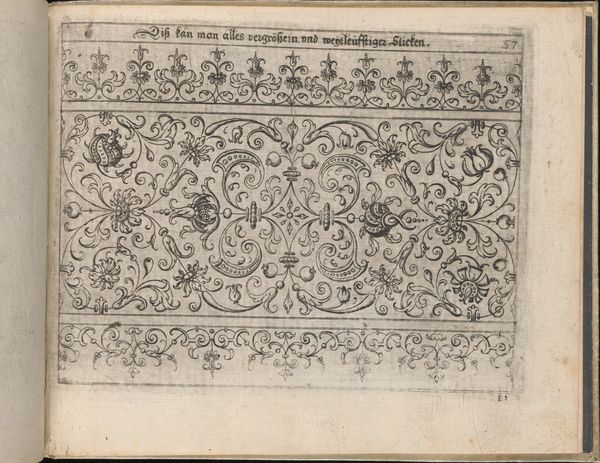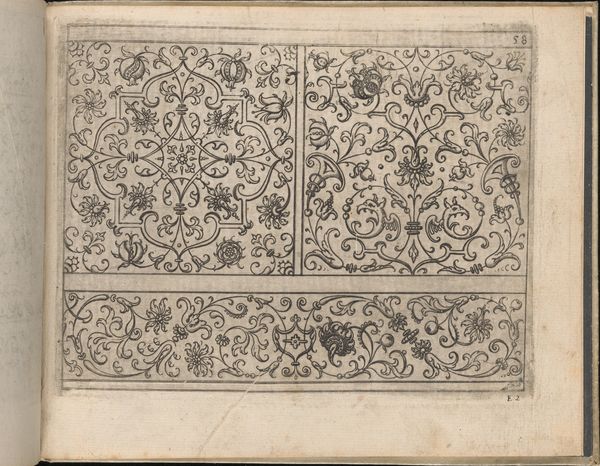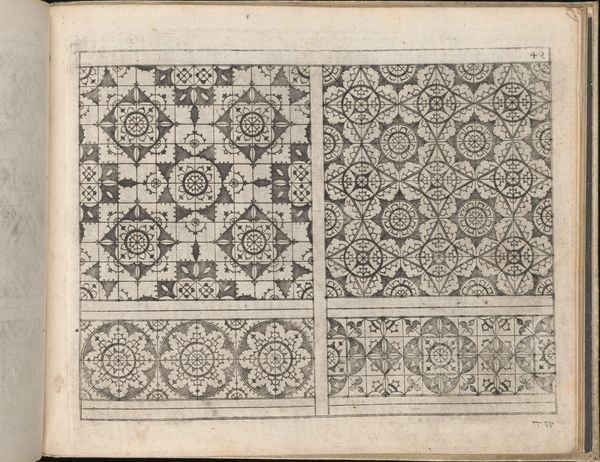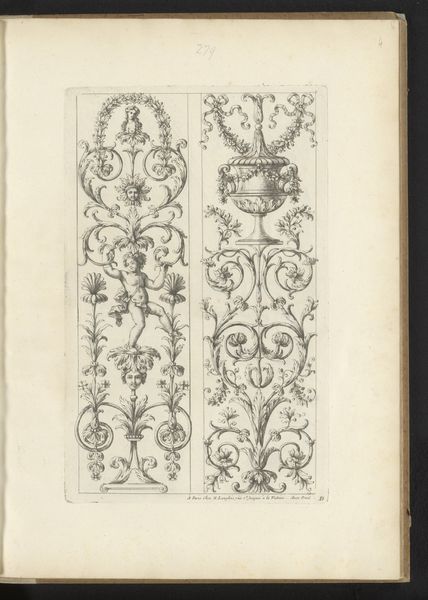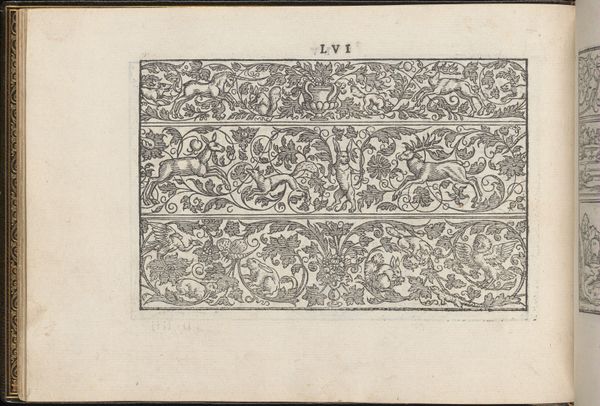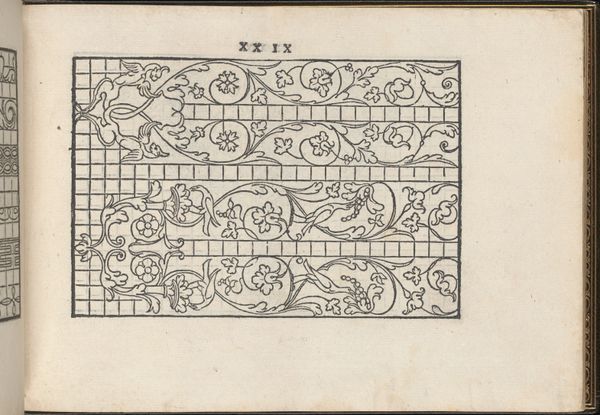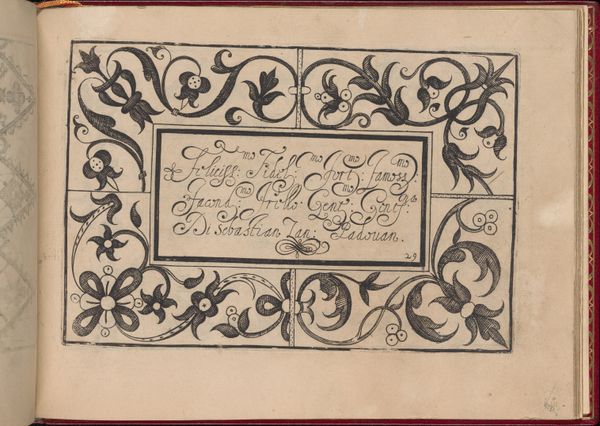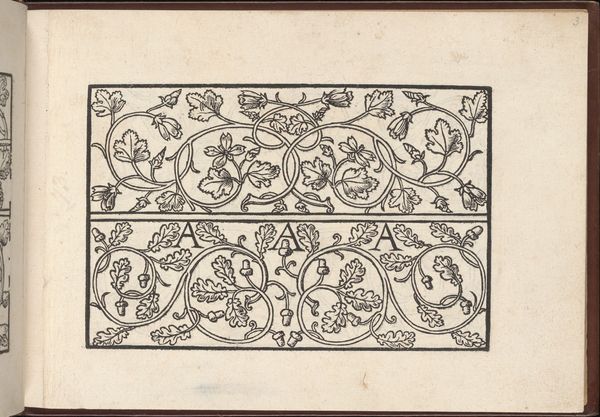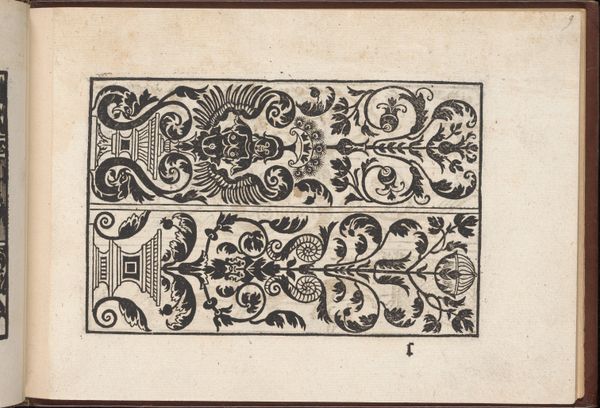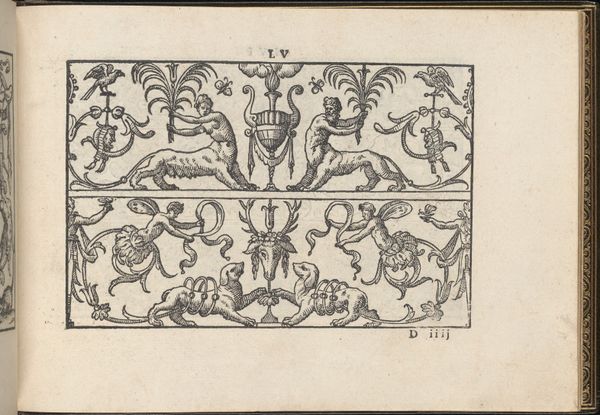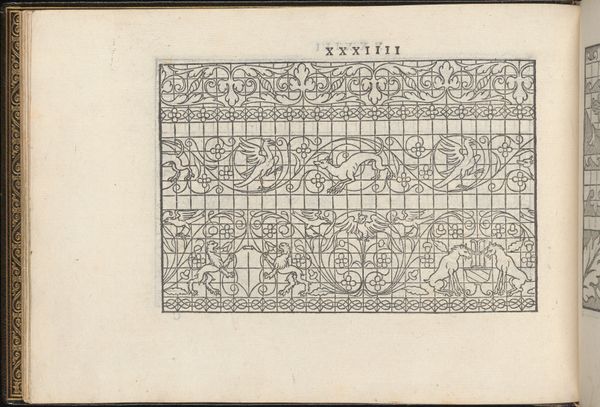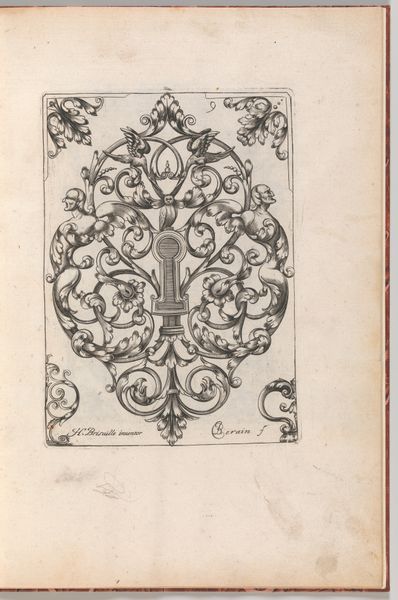
drawing, graphic-art, ornament, print, woodcut
#
drawing
#
graphic-art
#
ornament
# print
#
geometric
#
woodcut
#
northern-renaissance
#
calligraphy
Dimensions: Overall: 5 11/16 x 7 1/16 x 3/4 in. (14.5 x 18 x 1.9 cm)
Copyright: Public Domain
Curator: Johann Sibmacher's "Newes Modelbuch in Kupffer," specifically page 64r, is an incredible example of Northern Renaissance graphic art, created as a woodcut drawing in 1604. It's currently held at the Metropolitan Museum of Art. What strikes you initially? Editor: It feels delicate, almost ethereal, even though it's a print. The patterns are so intricate—like peering into a frost-covered window or an antique embroidery sampler. There's a rhythm to the ornamentation, a sort of visual music. Curator: Indeed. It belongs to a "model book," offering designs for embroidery and other crafts. What strikes me is the beautiful synthesis of geometric structure with organic, flowing forms. Look how the swirling vines and blossoms are contained within neat, defined compartments. Editor: So, it’s a template, a starting point. Does that diminish its artistic merit, or enhance it? It feels more utilitarian than high art, initially. Curator: That’s a fair point, but consider the cultural context. During the Northern Renaissance, the lines between art, craft, and design were much blurrier. Sibmacher's intention wasn’t simply to create beautiful images; it was to democratize art, to make it accessible to a broader audience by providing them with these blueprints for creation. Also, note the calligraphic flourishes mixed with representational flowers. It is playful. Editor: I see, almost an act of early DIY! And you're right, the lettering adds such an unexpected grace. Do you notice how the darker lines really push forward against the paper? They demand your full attention to the smallest details of its creation. Curator: Exactly. The materials and printing process are essential. A woodcut allows for a certain boldness of line, a tangible texture that’s so appealing to the touch. Also, this wasn't meant to be viewed as a pristine object in a gallery. This was meant to be used, handled, and reinterpreted. So it’s about process, transformation, and the act of making itself. Editor: So much artistry tied to a humble book of designs! My initial impression of a mere decorative pattern book is gone. Now it makes me think about shared inspiration. Curator: Exactly! We look back through all these centuries and discover these wellsprings of shared making, art for everyday creation.
Comments
No comments
Be the first to comment and join the conversation on the ultimate creative platform.
